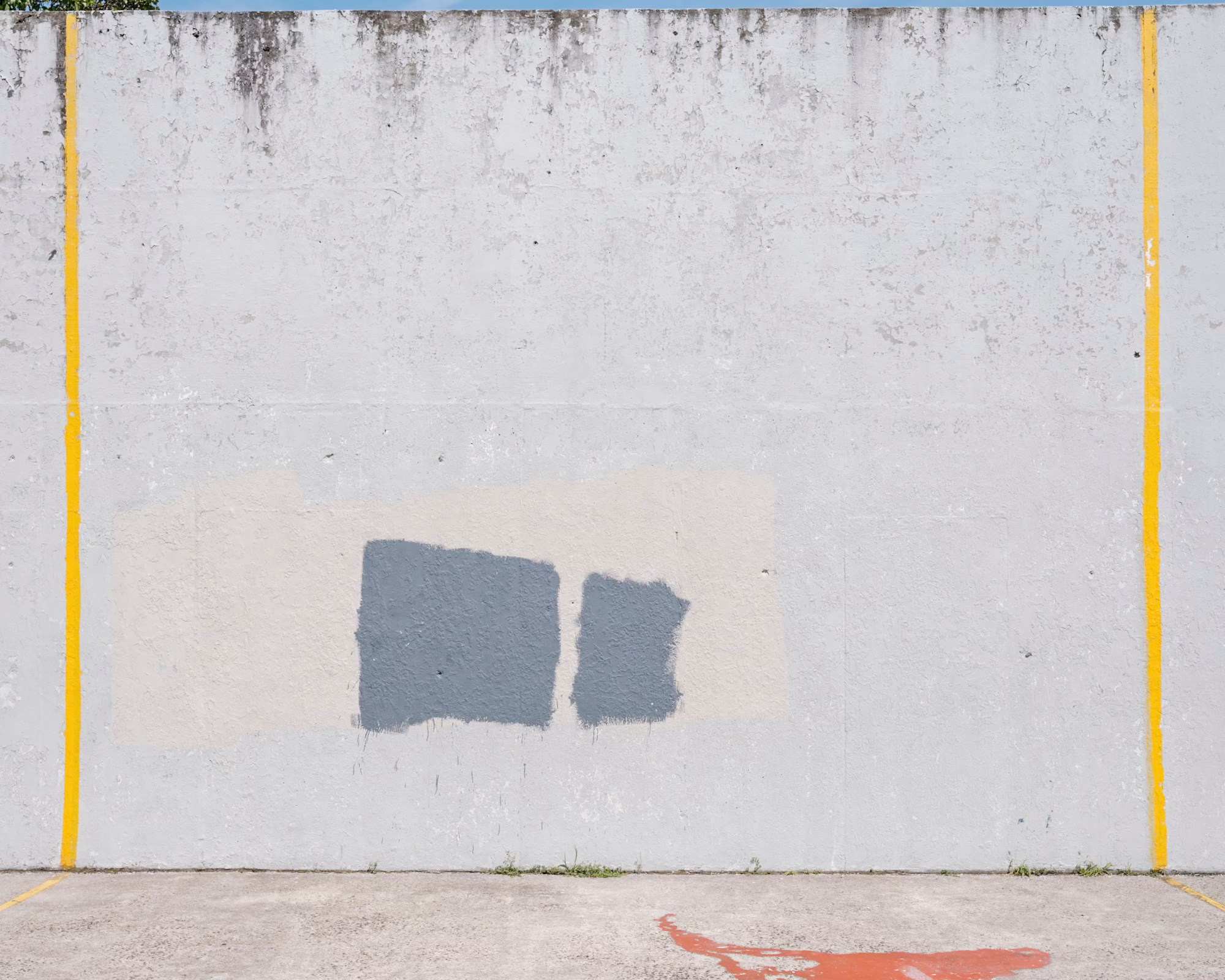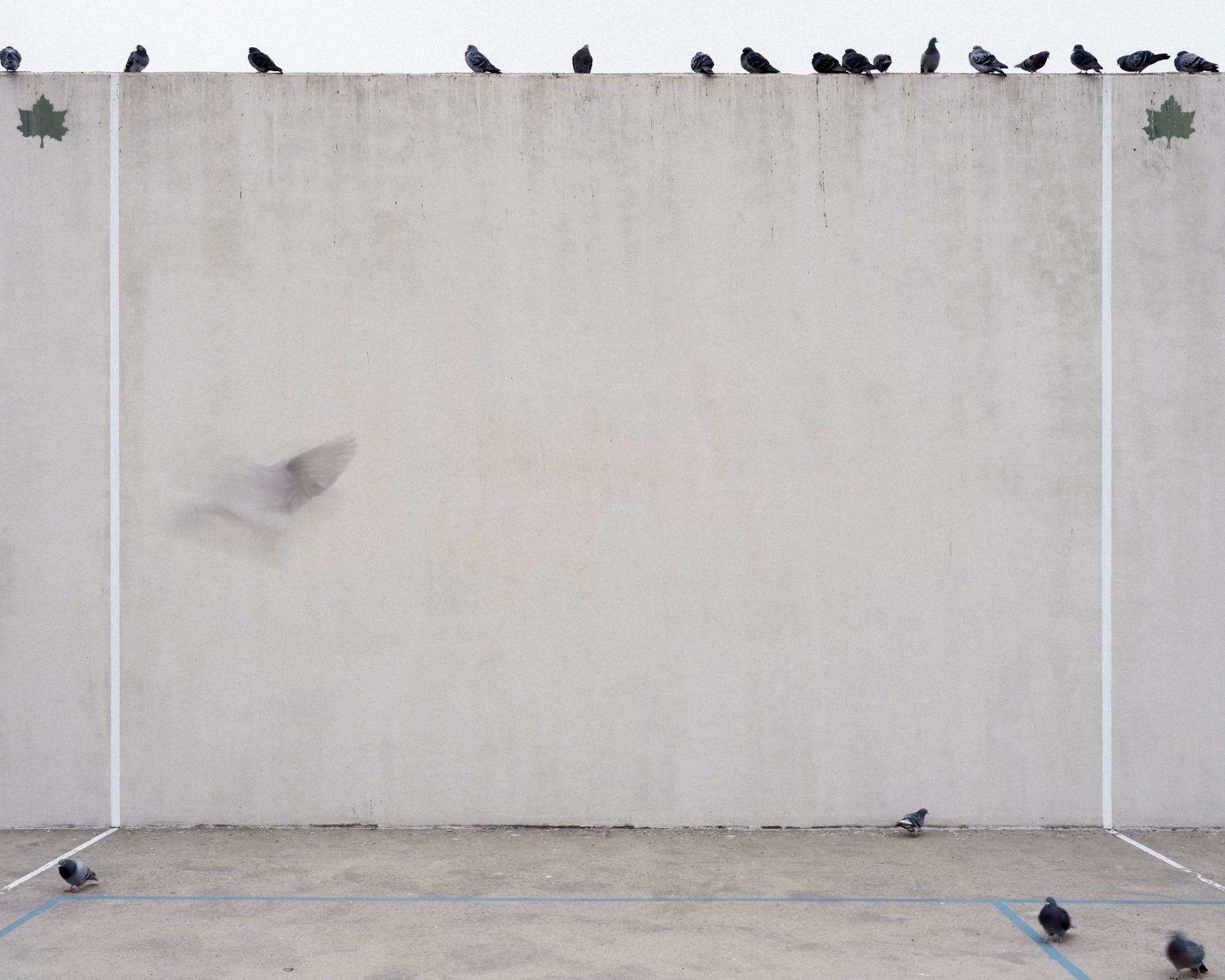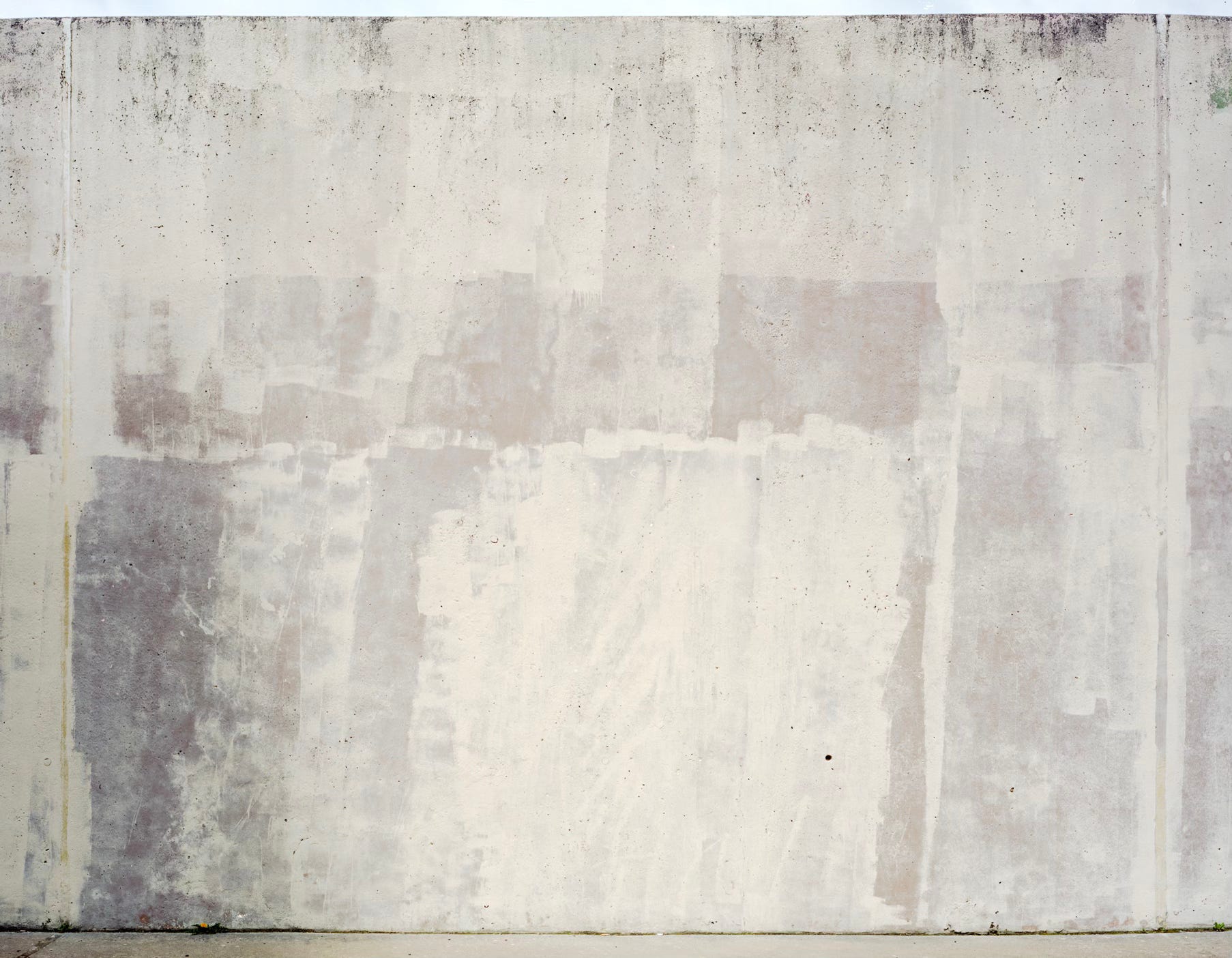Last year, I figured most readers would be too busy spending their 4th of July weekend barbecuing and lighting Roman candles to read about neighborhoods. Instead, I shared a series of images with the stars and stripes found throughout the city. This year, in lieu of flags, I thought I would feature another of my ongoing projects.
Over the years, as I’ve photographed the city, I’ve amassed a collection of loose typologies—those omnipresent features like storefront churches, split houses, and dead ends that create a throughline across the different neighborhoods and boroughs of New York.
One of the first subjects I began to document somewhat systematically was handball walls. These large concrete monoliths, pockmarked, peeling, and painted-over slabs, preside over playgrounds like oversized Rorschach tests. A standard wall is 16’ by 20’, mirroring the proportions of the 8x10 camera I was working with. They are everywhere.
I was confused when a Wikipedia search claimed that handball features two teams of seven players who try to throw their ball into the opposing team's goal. While this combination of soccer, basketball, and water polo is nothing like the handball we know and love in NYC, it has the potential to be the subject of the best Ben Stiller movie ever made. Believe it or not, it is also an Olympic sport. You can watch the world's top ballerz compete for gold starting at the end of this month.
NYC-style handball, which really would more logically be called wallball, is directly descended from Gaelic Handball, a game that has been played in Ireland for hundreds of years. In fact, people have been playing some form of handball since at least 2000 B.C.
Priests enjoying the game are depicted in hieroglyphs in the Osiris temple.
In Scotland in 1427, King James I, an ardent handball enthusiast, ordered his men to block up a cellar window in the castle after his ball kept getting hit into the opening. Just three days later, when a band of assassins came to murder him, the King was discovered hiding in the cellar, his only escape route freshly bricked off.
“Alas, in that vault, a gap once was where through the King might have fled, but three days hence closed walled had it been by his will, for the ball would run therein when without at the palm he played.”
In Ireland, handball alleys were built so the hugely popular game could be moved away from the sides of churches and their easily broken stained glass windows.
When Irish emigrants came to the United States in the late 19th century, they brought handball with them. To unwind after hours of catechism class at the city’s many Catholic schools, Irish clergymen taught their students the intricacies of the game. In 1886, the “father of handball,” Phil Casey, built the first four-walled court in America at 297 Degraw Street in Cobble Hill, Brooklyn.
The one-wall game that everyone plays today got its start on the beaches on the southern shore of Brooklyn, where, when the tide went out, the high sides of the wooden jetties would serve as improvised handball walls.
During the New Deal years, the WPA put up hundreds of new handball courts throughout the city because they were cheap to build.
Today, despite the best efforts of pickleball practitioners, handball continues to be the second most popular city sport—the thwack of Spalding Big Blues providing a constant soundtrack in city parks.
Unlike European handball, the IOC has never considered this Rodney Dangerfield of ball sports for inclusion in the Olympics. Professional handballers are not retiring early. The top prize at the most prestigious handball competition in the city, The King of the Court, is a paltry $600. When Philip Casey took on Irish ace John Lawlor for the world championship in 1887, the winner took home $1,000.
WALLS
FEATURED PHOTOGRAPHER
Photographer Kenneth O Halloran’s project, The Handball Alley, documents the last vestiges of Ireland’s ubiquitous handball courts, which he calls the “thriving open-air theatres of their day.” It is a fantastic series that I am NOT going to say is right up my alley, even though…
The alleys came alive at a time in Ireland when human interaction needed little in the way of sophisticated props or accompaniments. In rural Ireland in particular handball captured the public imagination and societies grew around the games and the alleys which staged them. They became prized places of refuge, offering an escape from ordinary, hard-working lives.
Closer to home, photographer Charles Johnstone has also created a series on NYC handball courts, though I had trouble tracking down a gallery of the images. Here is a link to his book, though.
NOTES
Hands and fingers make up about 35 percent of all firework-related injuries.
Ivan Čupić is a Croatian handball player (the Olympic kind) who fell and caught his wedding ring on a wire fence, severing his finger at the first joint. His career has been unaffected by having only nine fingers.
Speaking of Croatia, picigin is a handball game invented in Split, Croatia, in 1908. Several players stand in ankle-deep water in a circle, batting around a small ball with their hands, trying to keep it out of the water without catching it.
Most traditional players believe real picigin can only be played on the sandy beach of Bačvice in Split, so the chances of it taking off in the US are near impossible.

Thanks as always for reading, and for those of you who observe, I hope you have a great Fourth of July weekend!






























I grew up in Brooklyn playing handball competitively until my early 20s. It's such a city game. This was a great piece. In Ireland, what kind of balls were used? In NYC, you've got small ball and big blue. Most play big blue (softer, larger, like the spaldeens) and the top players and tournament players do the small, very hard, more bouncy ball. The money for tournaments and court hustling isn't enough to retire on, but a really good player can make in the thousands, easily. You should read up on Joe Durso
Grew up across the street from a park with a handball court in Queens, and it's such an ingrained part of my memories. The ever changing art on the wall - and the constant attempt to paint over it - was as much a part of the summer cycles as Mr Softy and lawn sprinklers. Thank you for this!